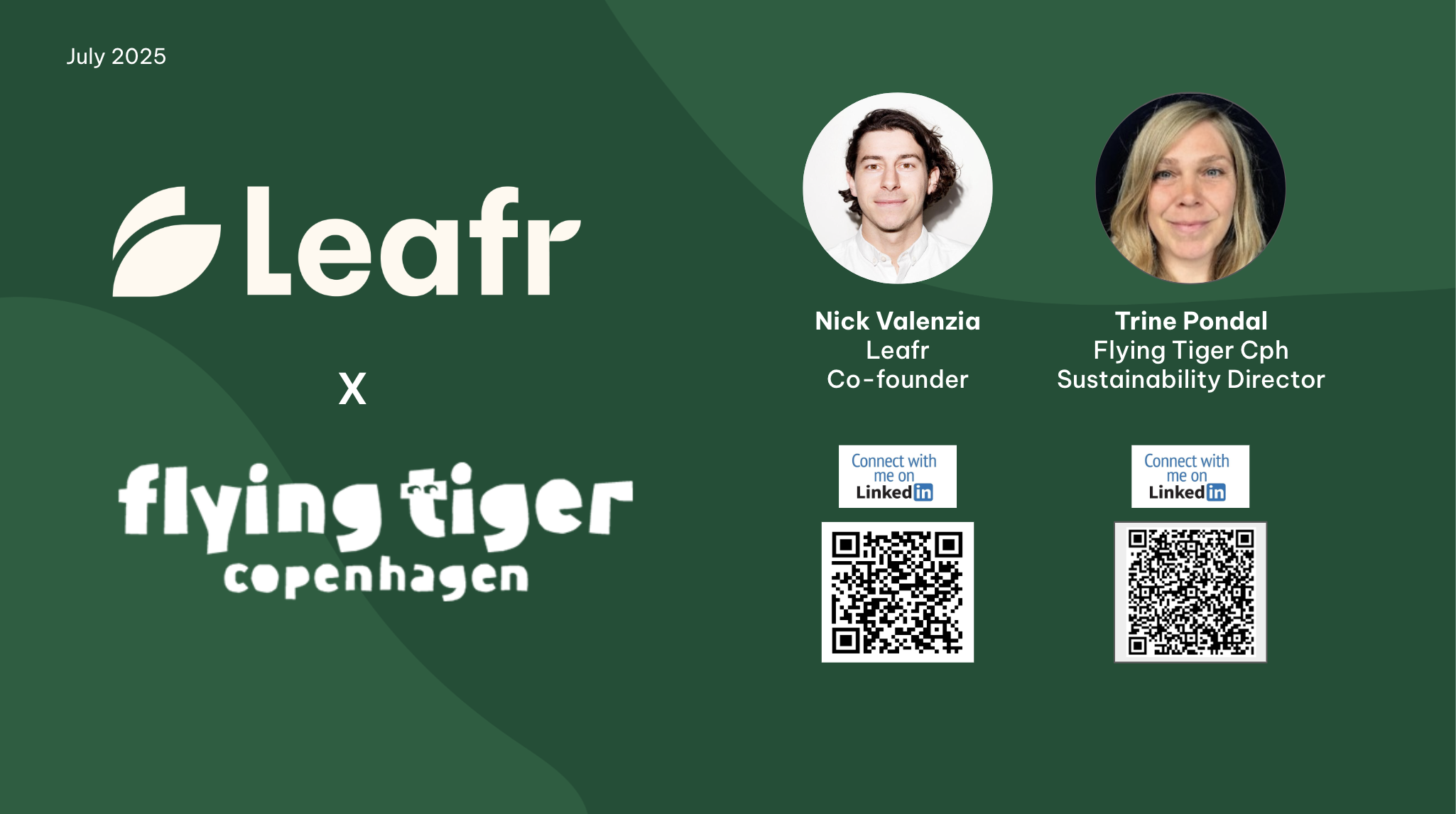How to do more with a small sustainability team (Webinar Recap)
Doing More with Less: The new reality for sustainability teams. Sustainability has never been more critical — or more under-resourced. In today's economic and political climate, CSOs and sustainability leads are being asked to deliver more impact with less support. In this article, we break down a practical 4-part framework for navigating this paradox


Despite mounting regulatory pressures, stakeholder expectations, and reputational risks, teams are shrinking, not growing. In plain terms: this under-resourced reality isn’t a temporary blip. It’s the operating environment for the next five years.
The core question facing every CSO, head of sustainability, or functionally adjacent leader is this:
How do you deliver more impact with fewer resources?
This article outlines the key themes from our session and proposes a practical framework to help sustainability leaders prioritise, structure, and influence their way to real results,even in constrained conditions.
1. Prioritisation
"The power of your yes is defined by how often you say no."
Sustainability leaders face a unique challenge: the breadth of their remit is near-limitless. Climate, waste, biodiversity, human rights, modern slavery, packaging, Scope 1-3 emissions, board reporting, regulatory compliance... the list goes on.
Attempting to tackle all issues at once is a guaranteed path to burnout and diluted outcomes. Instead, laser focus on what genuinely matters, to your business, your stakeholders, and your core sustainability objectives.
Tactics for prioritisation:
- Materiality first. Don’t chase trends. Focus on material risks and opportunities unique to your sector, operations, and footprint.
- Use frameworks like RICE:
- Reach: How broadly does the initiative impact?
- Impact: What’s the upside if it works?
- Confidence: How certain is success?
- Effort: How hard is this to do?
Example:
- Switching energy suppliers = high reach, high impact, high confidence, low effort.
- Scope 3 supplier pilot = medium reach, high impact, low confidence, high effort.
Which do you start with?
A prioritisation score helps justify your roadmap to leadership in business terms, and gives you the mandate to say "no" with confidence.
2. Team Structure
"Sustainability teams must evolve from owning all deliverables to orchestrating progress across the business."
Hiring full-time staff is harder than ever. Sustainability must adapt by embedding capability, not just headcount.
The two models winning today:
- Hub-and-Spoke:
- Lean central sustainability team (hub) sets strategy.
- Department-level owners or embedded consultants (spokes) drive execution.
- Fractional Leadership:
- Experienced part-time CSOs provide strategic rigour.
- Delivery is handled by business units and on-demand consultants.
This structure reduces bottlenecks, avoids silos, and weaves sustainability into the company DNA.
Critical success factor: Authority.Small teams can achieve big things, but only if they're empowered. Reporting lines matter. If you're not connected to the CEO, CFO, or board, your influence will suffer. Now is the time to have hard conversations about reporting structures and strategic sponsorship.
3. Culture
"Culture eats sustainability for breakfast."
Tools, frameworks and data won’t get you far without a culture that supports change. Culture is the invisible infrastructure behind every successful sustainability initiative.
How to build a culture of sustainability:
- Training that makes people care:
- Training isn’t about making everyone an expert.
- It’s about building buy-in so people respond when you knock on their door.
- Map your influencers:
- Who makes decisions?
- Who controls resources?
- Who are your biggest internal allies and blockers?
- Storytelling over spreadsheets:
- Lead with a quote or story; then show the data.
- People remember faces, not charts.
- Create rituals and repeat messaging:
- Sustainability culture is built through consistency.
- Repeat themes, language, and goals across meetings, updates, and trainings.
Case Study: Flying Tiger
Flying Tiger Copenhagen’s sustainability leader rarely needs to pitch for internal budget anymore. Why? She focused on visibility, internal training, and simple, repeatable messages. The result? Momentum and trust.
4. Language
"Speak in their outcomes, not your acronyms."
Too often, sustainability is communicated in a dense fog of acronyms (TCFD, CSRD, SBTi) and moral imperatives. It doesn’t work. People don’t change because of carbon, they change because of cost, risk, revenue, and reputation.
Reframe your language to drive action:
- Don’t preach, solve.
- Talk about cost savings, risk mitigation, and talent attraction—not just emissions.
- Ditch the jargon.
- Speak to your colleagues like smart friends, not policy experts.
- Make it concrete.
- Always end with a clear, one-sentence action item.
Example:
Instead of: "Our Scope 2 emissions reduction will align with CSRD compliance."Say: "Switching to renewables will cut costs and reduce audit headaches this year."
Final Thoughts: Build Momentum, Not Perfection
Sustainability isn’t a sprint, and in today’s operating climate, it can’t be a vanity project either. Focused progress, smart structure, strong culture, and plain language are how you protect your credibility and move the needle.
This is what the next 5 years will look like: tighter budgets, higher expectations, and faster delivery. But it doesn’t have to be disheartening. With the right mindset and a few tactical shifts, it's entirely possible to build high-impact, high-credibility sustainability functions.
How Leafr can help:
- Join our Heads of Sustainability Community - Apply here
- Monthly, in-person dinners and online resource sharing.
- Real talk, real solutions.
- Access top-tier, on-demand consultants - Find an expert now
- Hire for deliverables, not headcount.
- Contribute to the True State of Sustainability Report 2025 - Take the survey
- Share your experience. Shape the conversation.
See the slides here
Watch the full recording of the webinar here




















